Our planned day trip through Columbus and two of Ohio’s most stunning natural areas took an unexpected turn before it even began.
The grand Greek Revival-style Ohio State Capitol, built in 1839, would have to wait for another visit – RV parking in downtown Columbus proved more challenging than we anticipated so we pressed on to explore the region’s famous geological wonders, though our early September timing would prove to be less than ideal for experiencing these parks in their full glory.
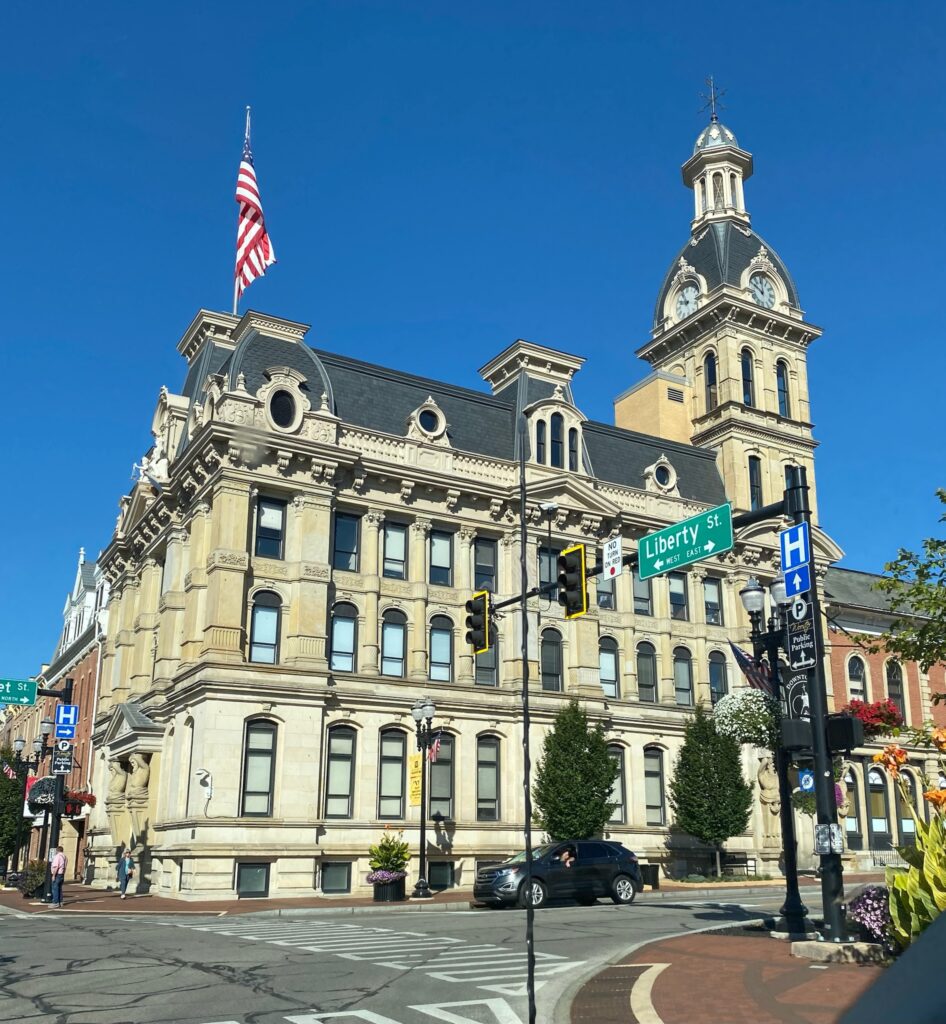
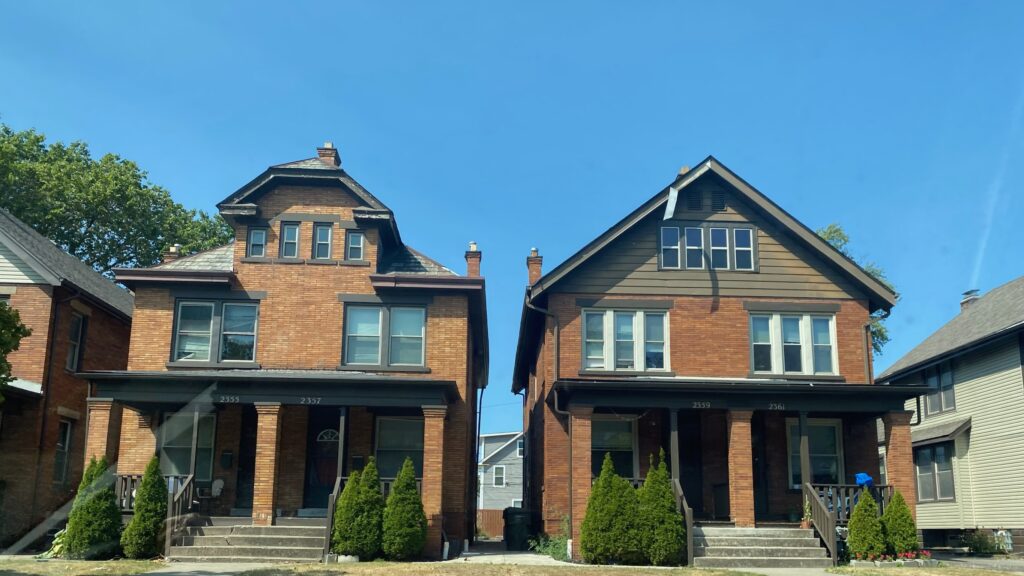
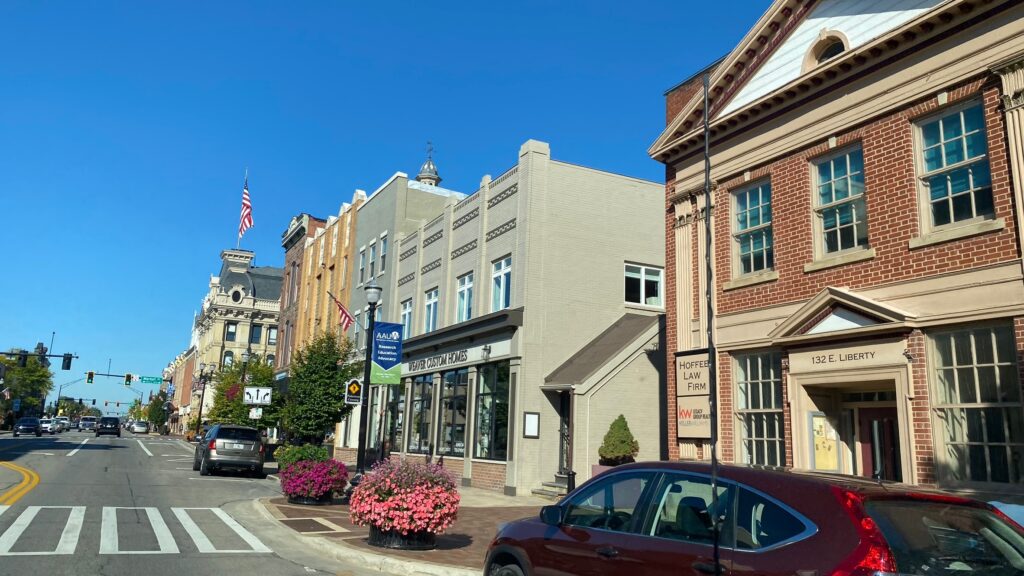

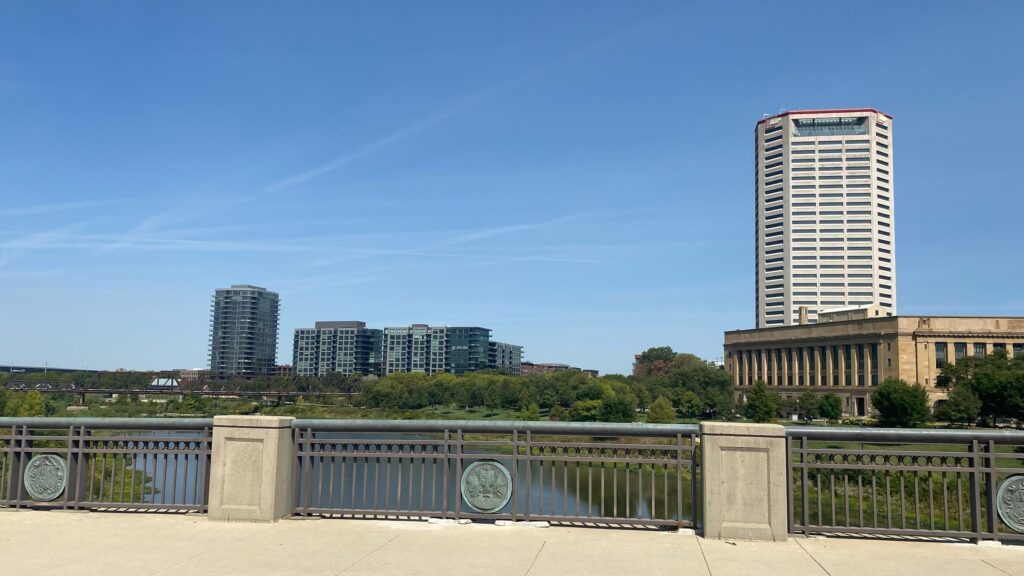
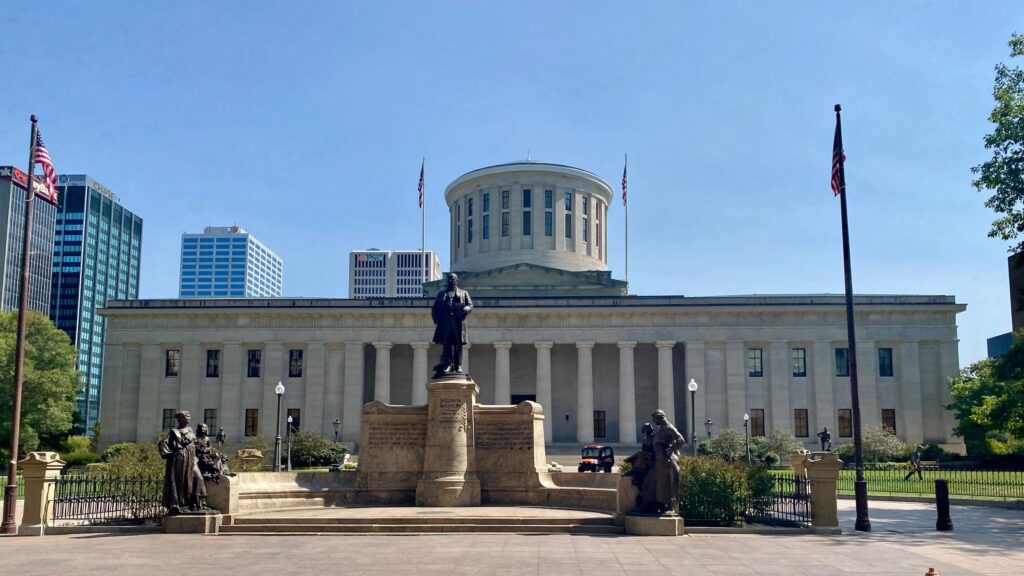
Hocking Hills State Park
Heading southeast from Columbus, we arrived at Hocking Hills State Park, a dramatic landscape carved by glaciers and time. The park’s striking features were shaped during the last ice age, when glacial meltwater carved deep gorges into the soft sandstone, creating the rock formations we see today..
The main attractions here lie along the Old Man’s Cave Trail, a 1-mile loop that’s considered moderate in difficulty. While the trail infrastructure is impressive with well-maintained paths, strategic guardrails and clear signage, our visit during the dry spell of early September meant we missed out on one of the park’s main attractions – its waterfalls. Where we’d hoped to see cascading water, we found mostly dry rock faces. The Upper Falls, Middle Falls, and Lower Falls were more like “Upper Trickle”, “Middle Drip”, and “Lower Dampness”.
Still there was undeniable beauty in the massive rock formations. Old Man’s Cave itself, named after Richard Rowe, a hermit who lived in the large recess cave in the late 1700s, was impressive regardless of water flow. Walking through the gorge, with its 150-foot cliffs towering above us, gave us a real appreciation for the power of water over time – even if the water was conspicuously absent during this visit.
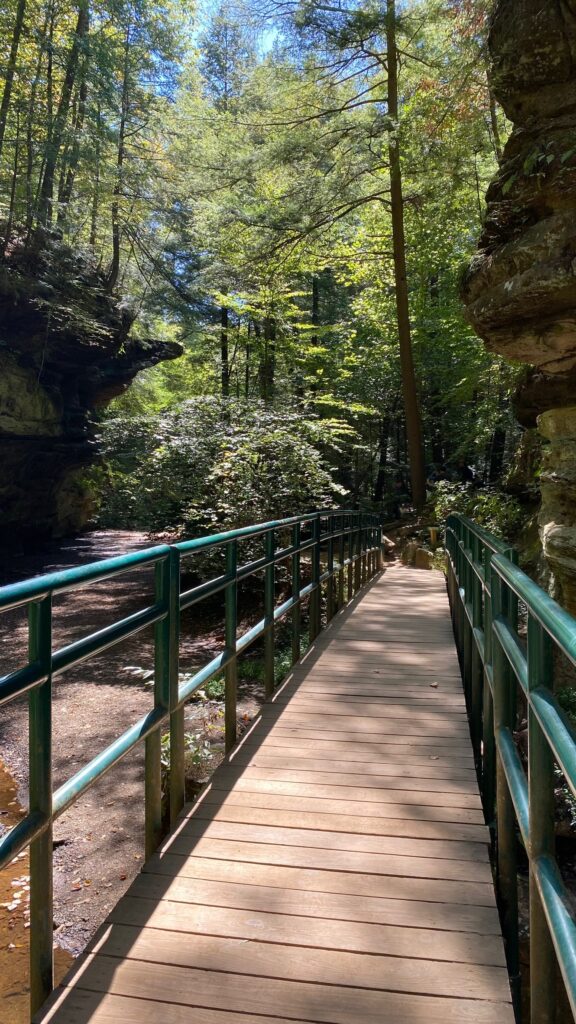
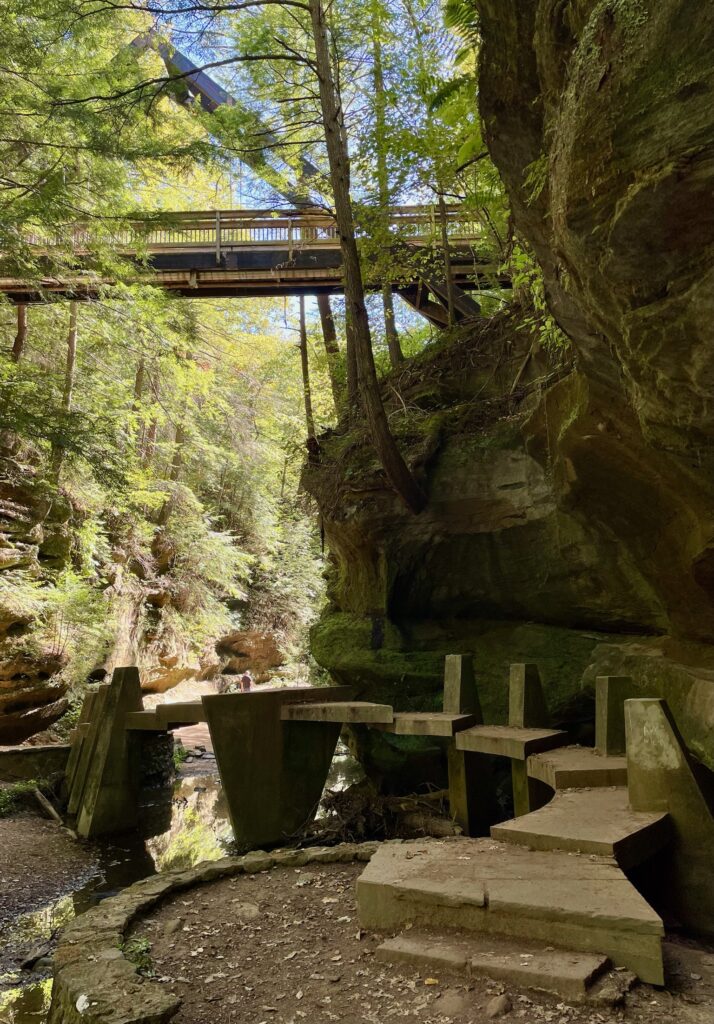
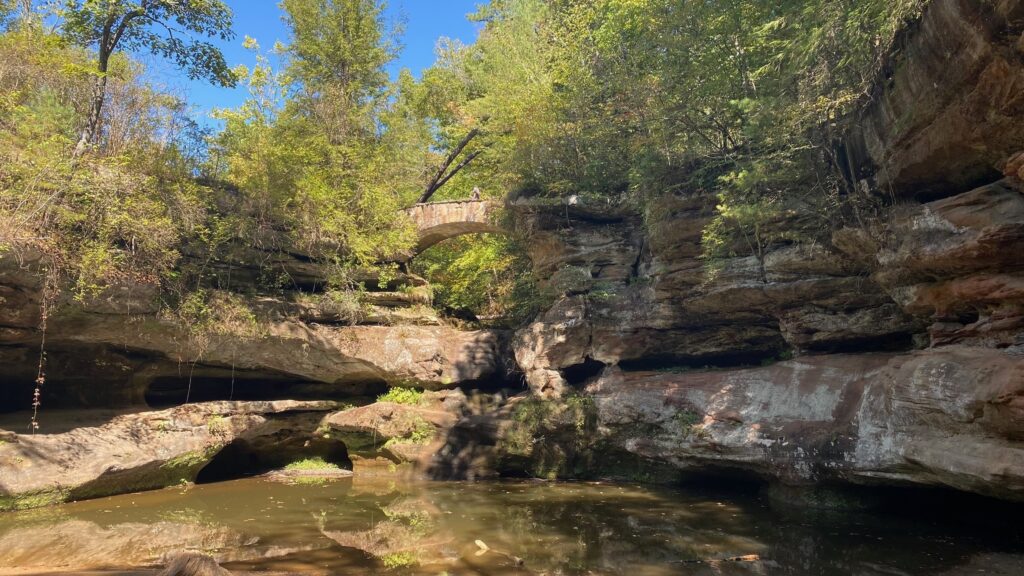

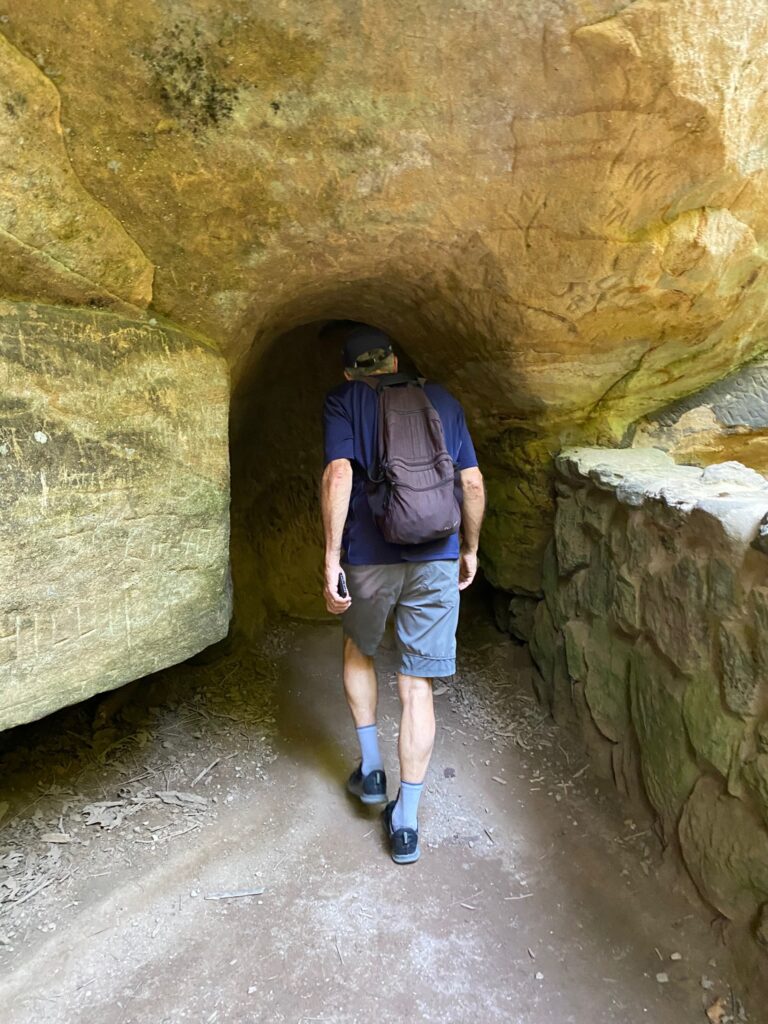

Conkles Hollow State Nature Preserve
A short drive away, Conkles Hollow State Nature Preserve offered another perspective on late summer in Ohio’s natural areas. Named after W.J. Conkle, who carved his name and the date 1797 into the sandstone cliff face, this preserve features some of the most impressive cliffs in the state, rising 200+ feel above the valley floor.
We took the Gorge Trail, a remarkably accessible 1-mile round trip path that winds through the bottom of the narrow gorge. While the trail was easy to navigate, we couldn’t help but imagine how different it must look in spring or after heavy rains. The dry creek bed and quiet walls of the gorge told us we were missing out on the sound of running water that adds to the mystical atmosphere of this place.
Despite this, the cliffs created their own microclimate, hosting unique plant life, including rare ferns and hemlocks. We also saw some deer. As the walls narrowed to just 100 feet apart, the temperature noticeably dropped. While we didn’t tackle it, the Rim Trail – a 2.5-mile loop circulating the top of the gorge – is said to provide some great panoramic views.
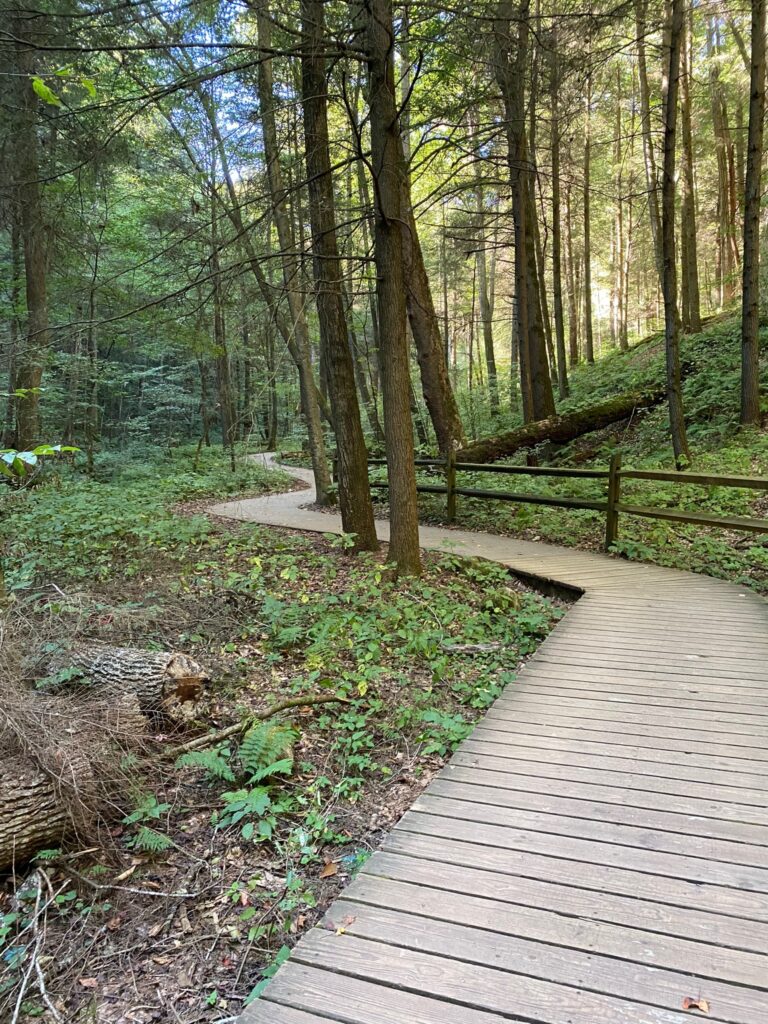

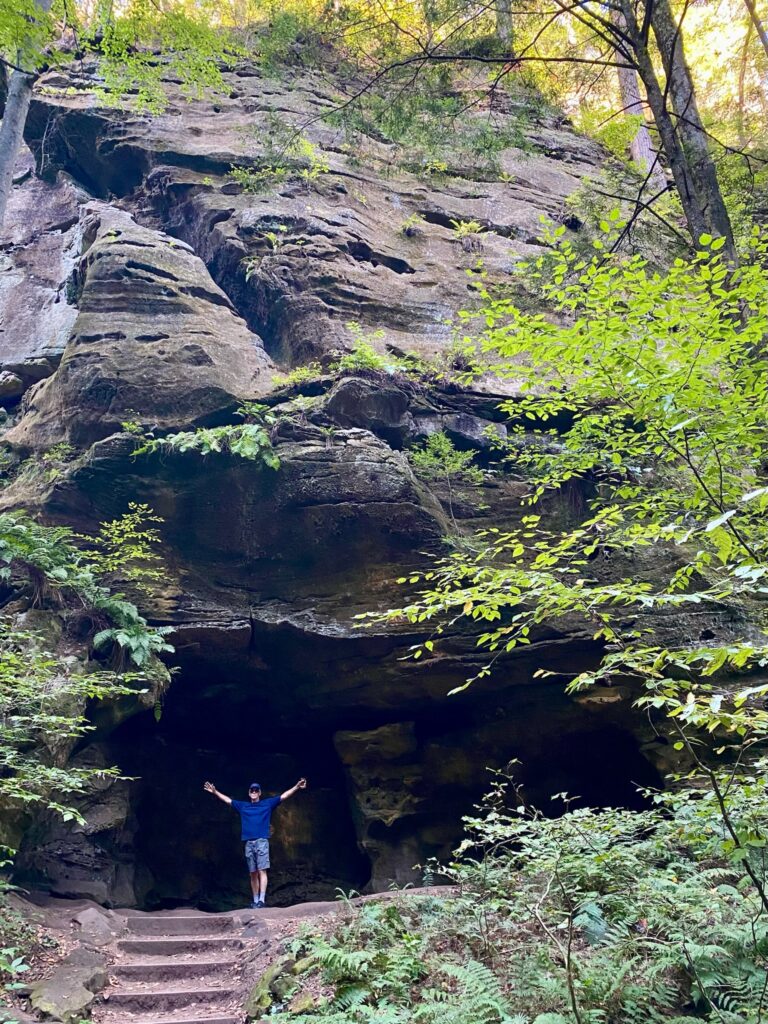
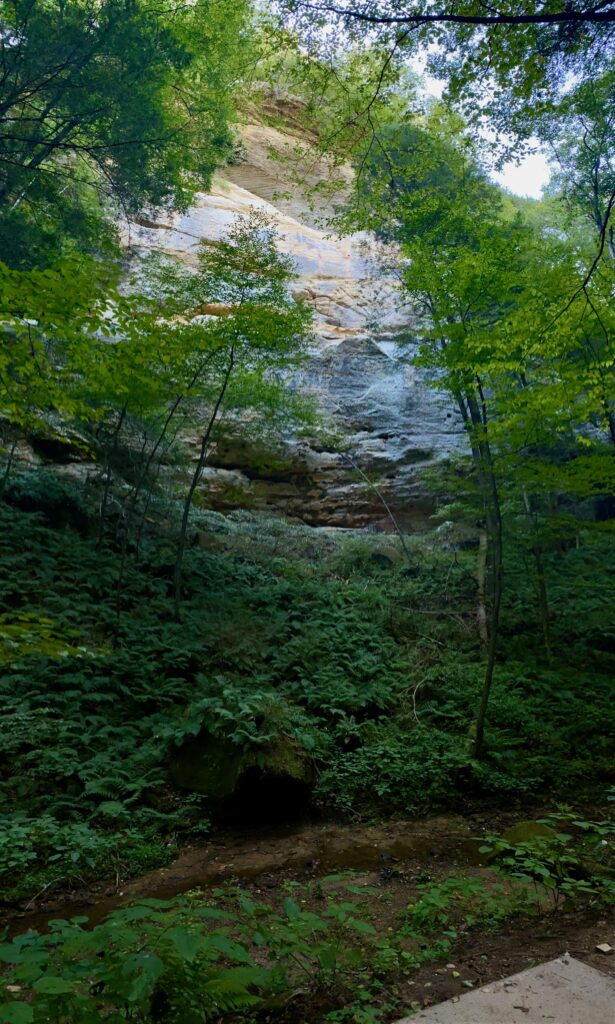
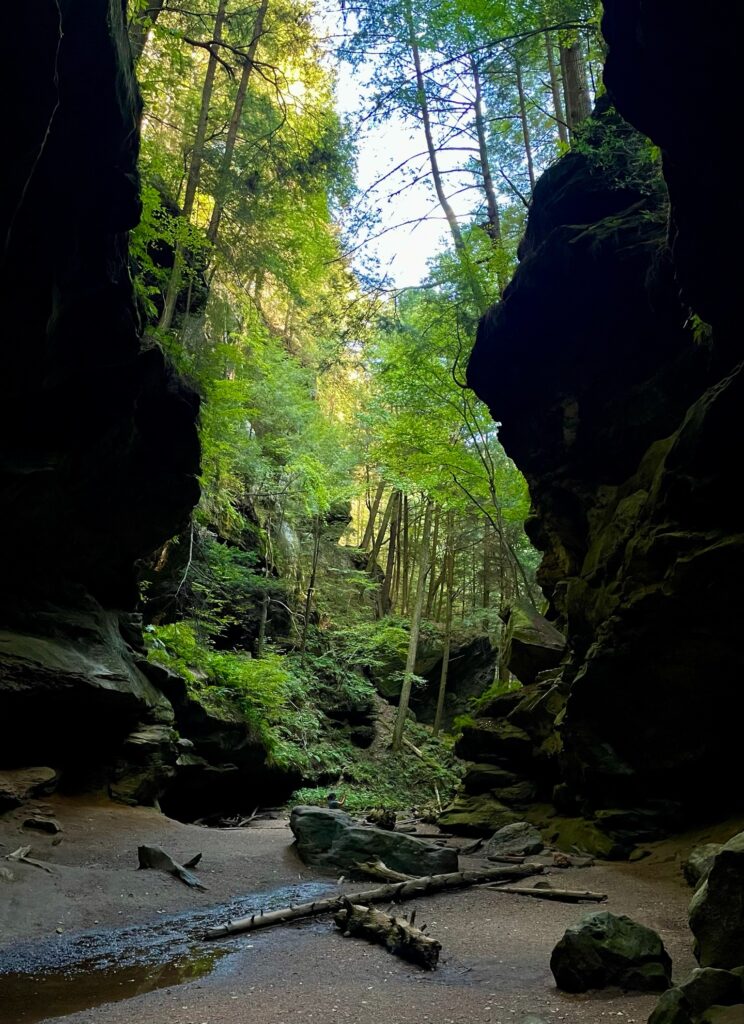
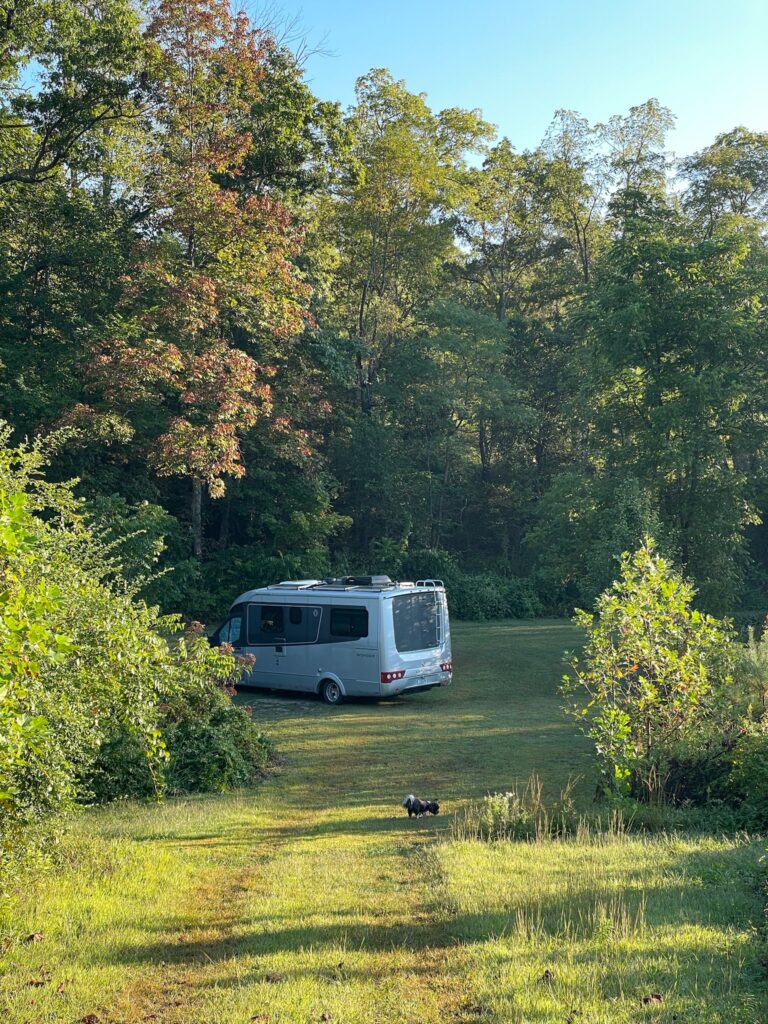
Not every trip goes as planned. We did not see either park at the ideal time to experience their full potential, we missed an opportunity to see the inside of the state capitol, and we didn’t even make it a third park called to Rockbridge Natural Bridge Preserve to see Ohio’s largest natural bridge. We did, however, get a sense for downtown Columbus and we enjoyed the rock formations unique to each park we saw. Who knows? Maybe we’ll pass through this area some spring when the water if flowing, we have more time to visit Rockbridge, and we can make public transportation arrangements to visit the capitol

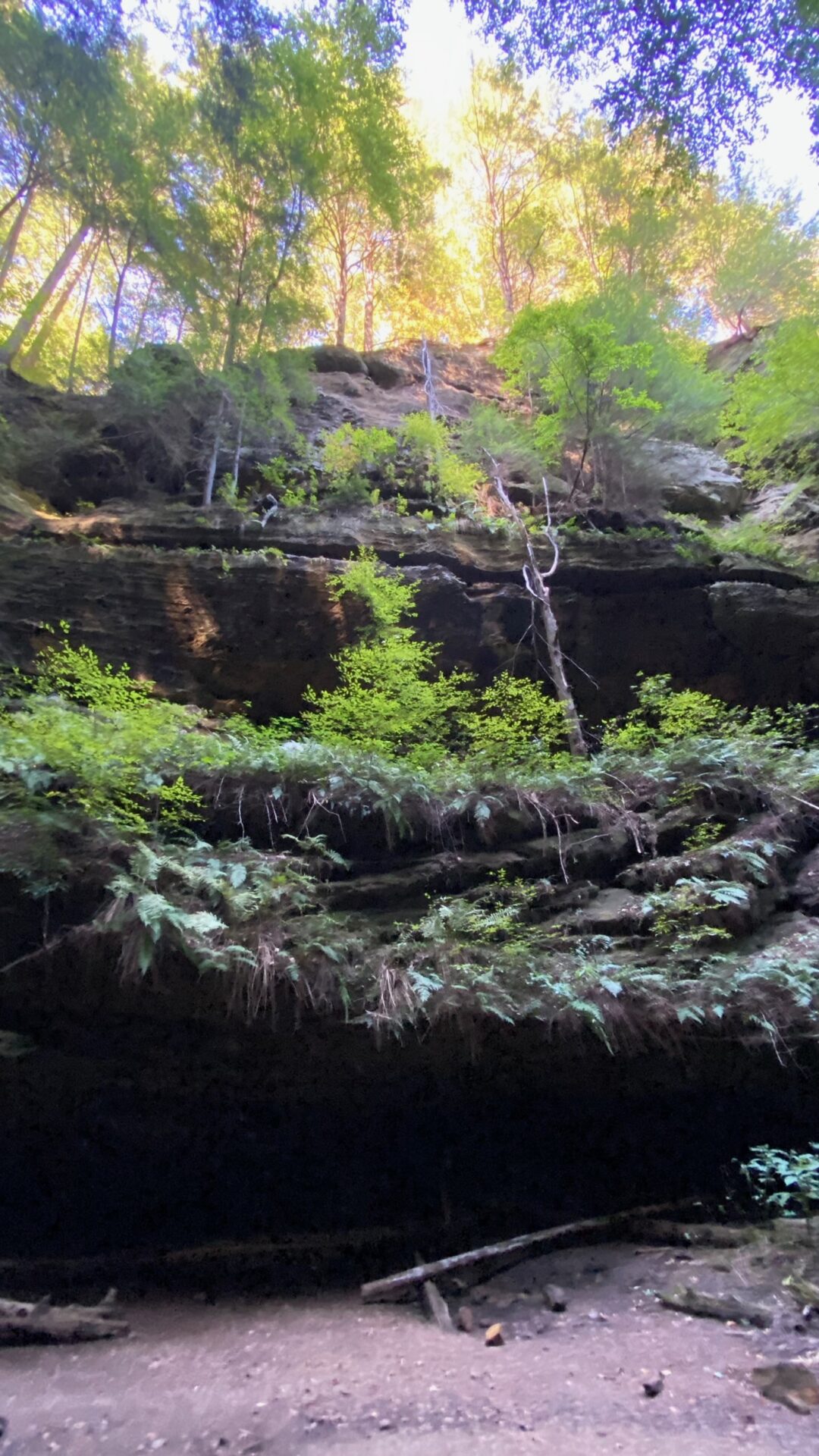
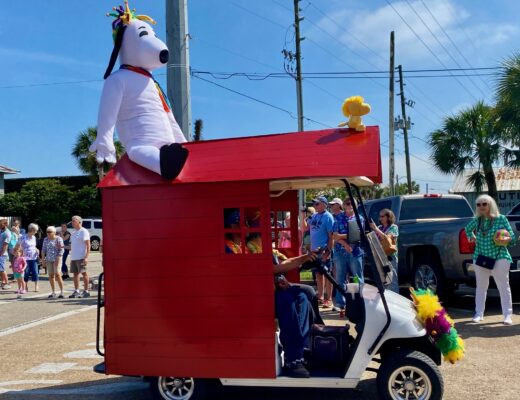



















 Did you know that the oldest and largest aviati
Did you know that the oldest and largest aviati


